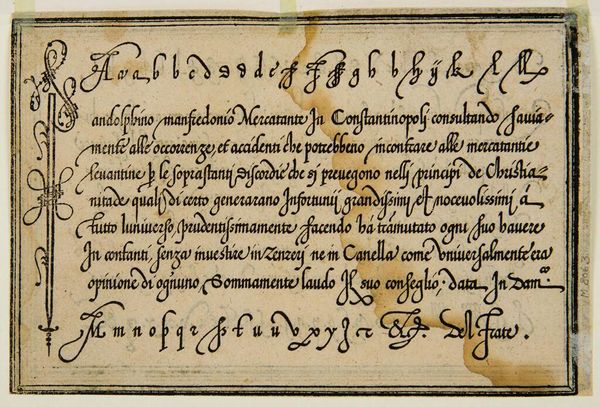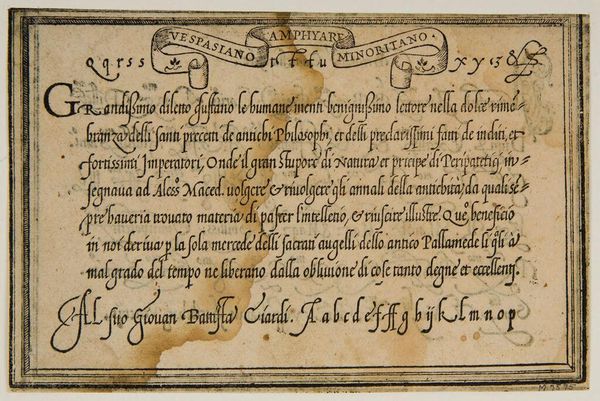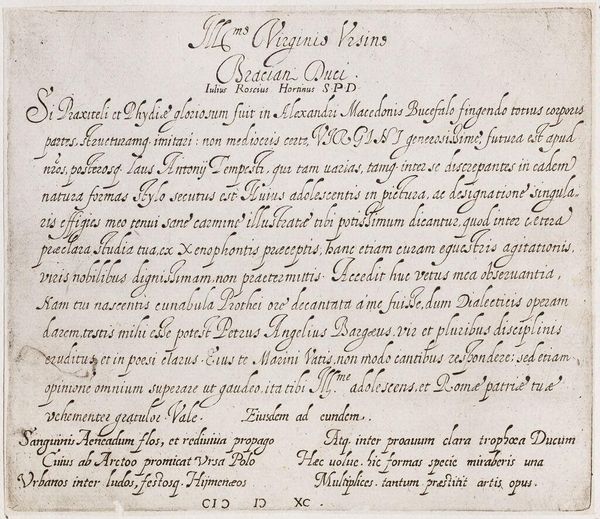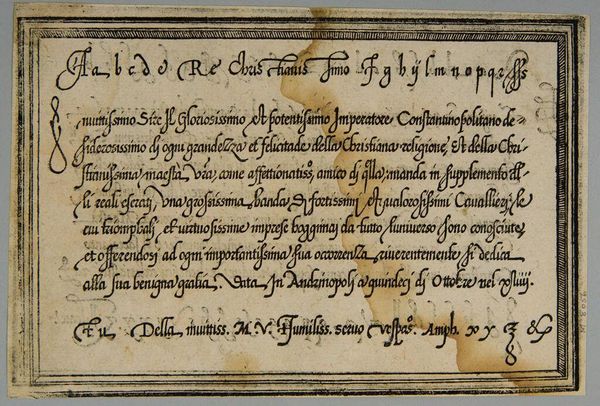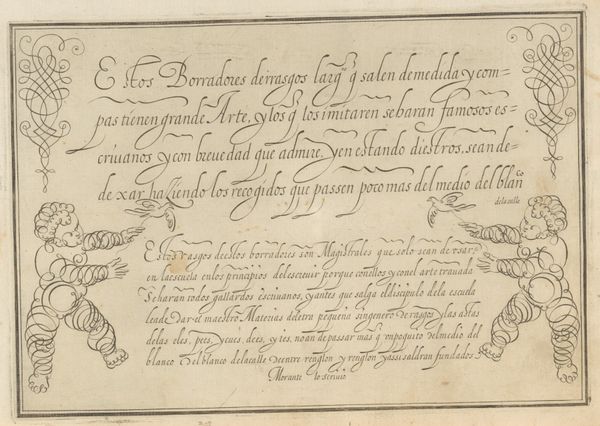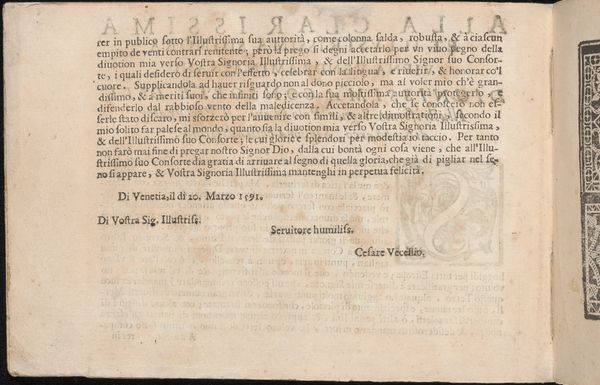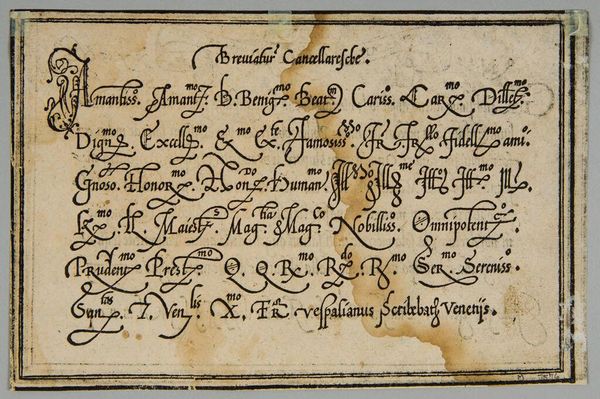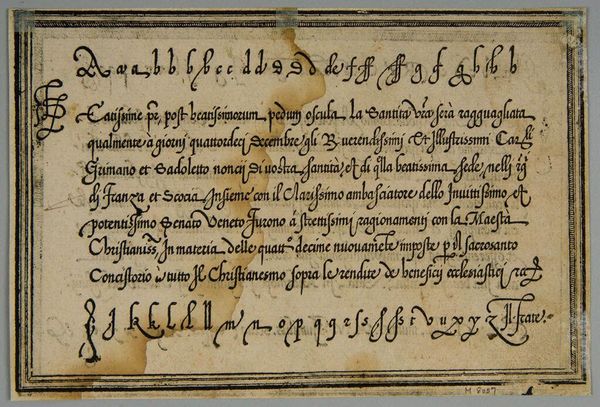
Copyright: CC0 1.0
Curator: Look at this intriguing piece, simply titled "Leaf IX," an anonymous work held here at the Harvard Art Museums. Editor: The script itself is arresting. The density of the lines, those idiosyncratic letterforms—it feels so weighty, so deliberate, almost oppressive. Curator: Indeed. Its visual density invites closer inspection of the individual shapes of the letters and the overall formal composition on the page. Editor: For me, it conjures something far more personal. It reads as a testament, or maybe even a curse—the way the ink bleeds into the page suggests a document of immense emotional burden. Look at the phrase "Vivit Post Funera Virtus" at the bottom! Curator: I notice that the use of “Litera Bastarda” is very distinctive in this piece, which would have been considered a style of handwriting that was popular in the Renaissance. Editor: Right, but think about the very word 'bastard' in that context, laden with social stigma. Perhaps the scribe sought to subtly embed a sense of transgression within the formal script itself. Curator: I see your point about the symbolic weight, and my analysis would focus on the structural integrity of the lettering itself as a testament to skill. Editor: So, together, we get a glimpse into a historical document that is full of skillful execution and profound psychological depth, don't you think?
Comments
No comments
Be the first to comment and join the conversation on the ultimate creative platform.

